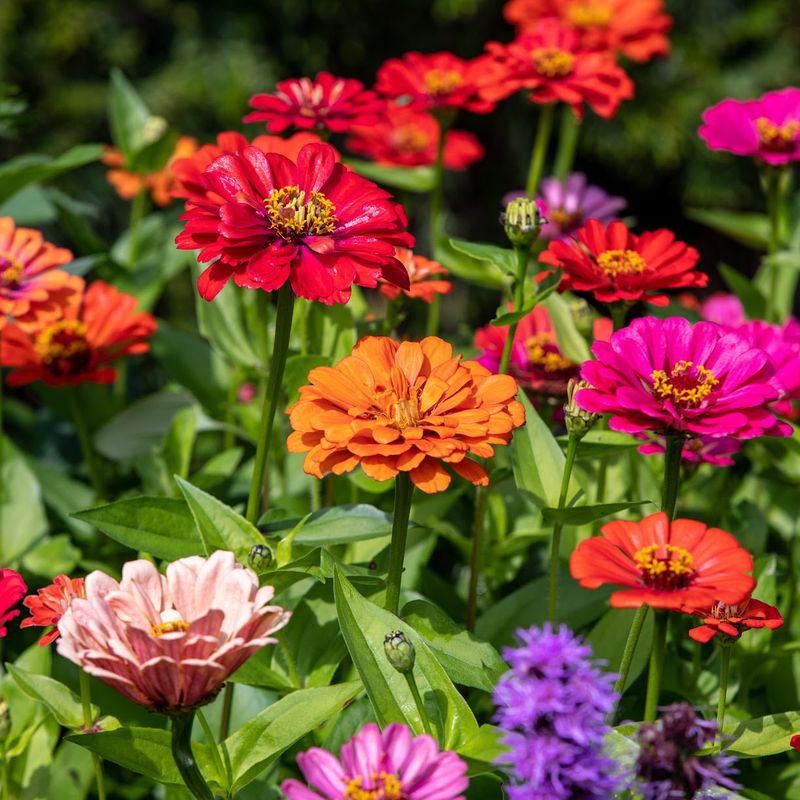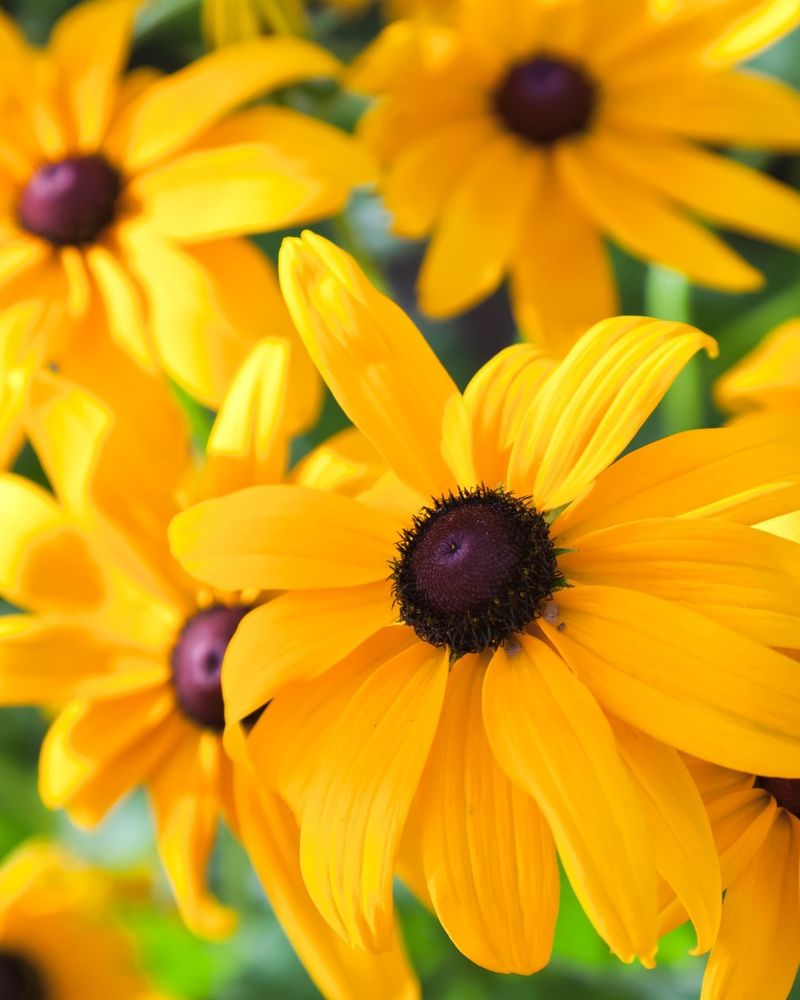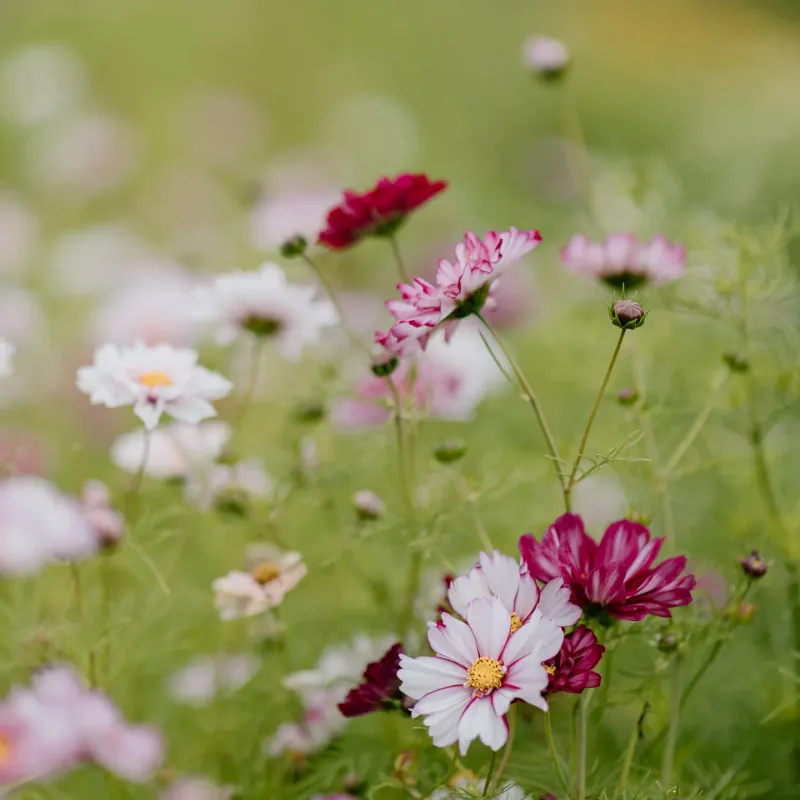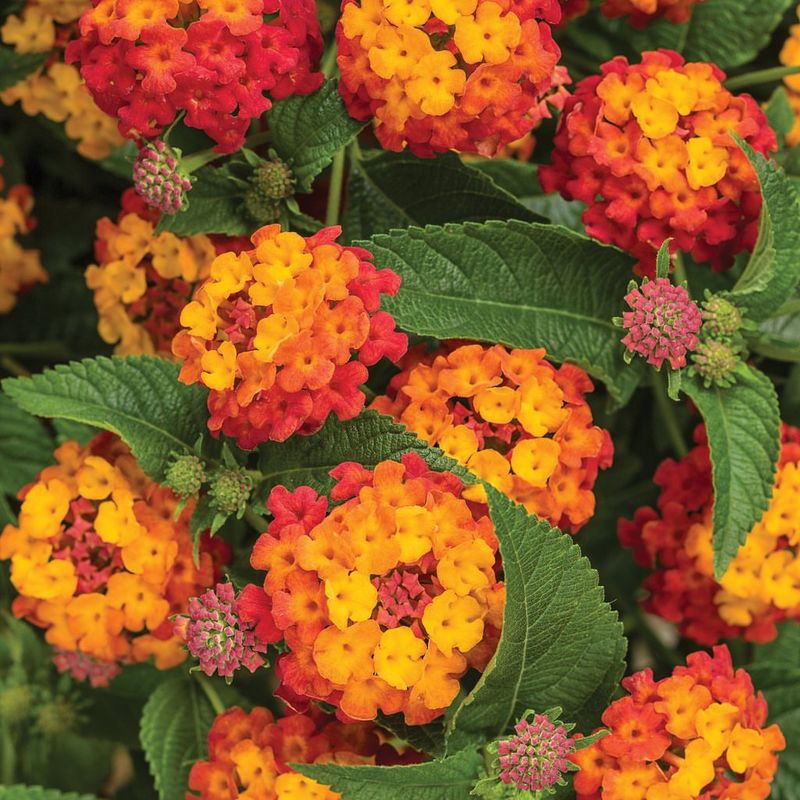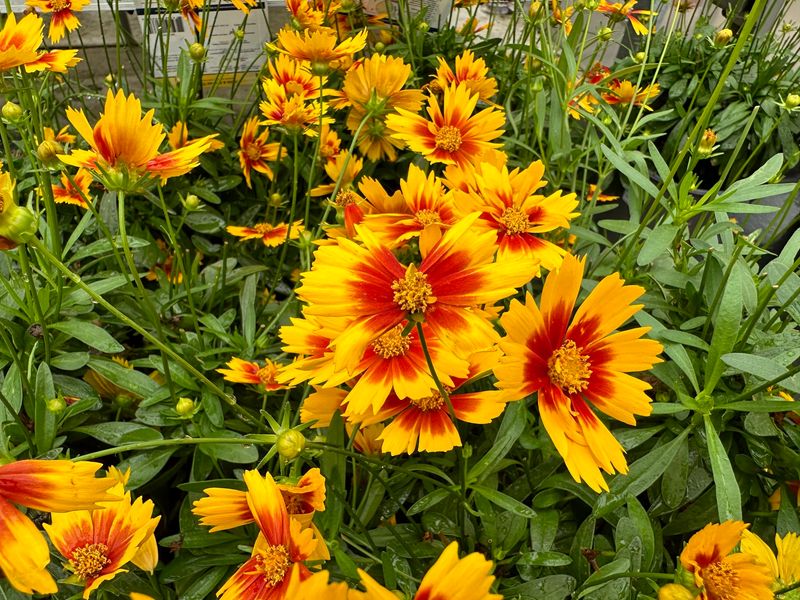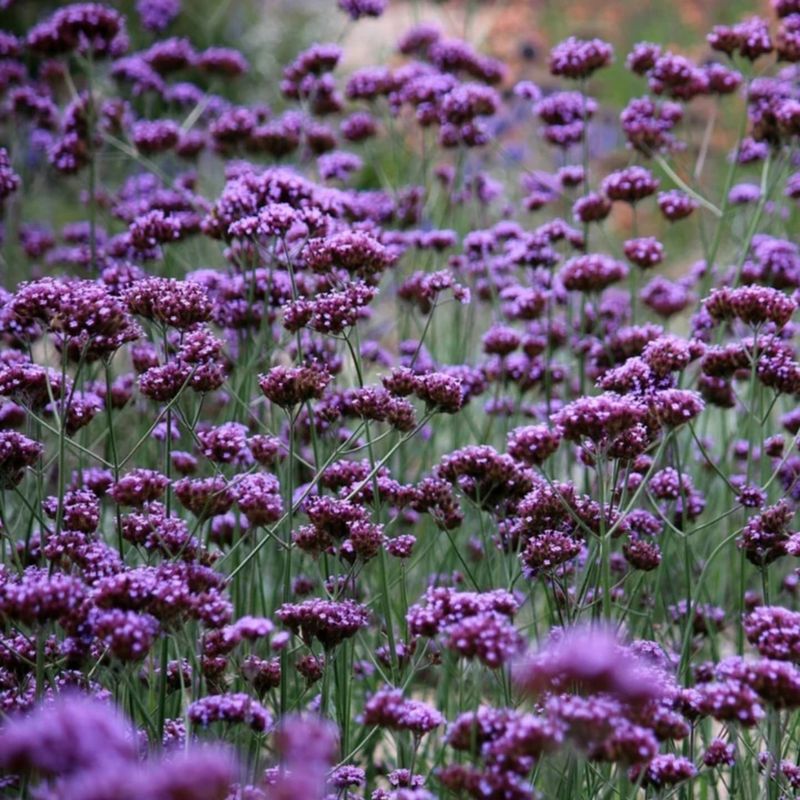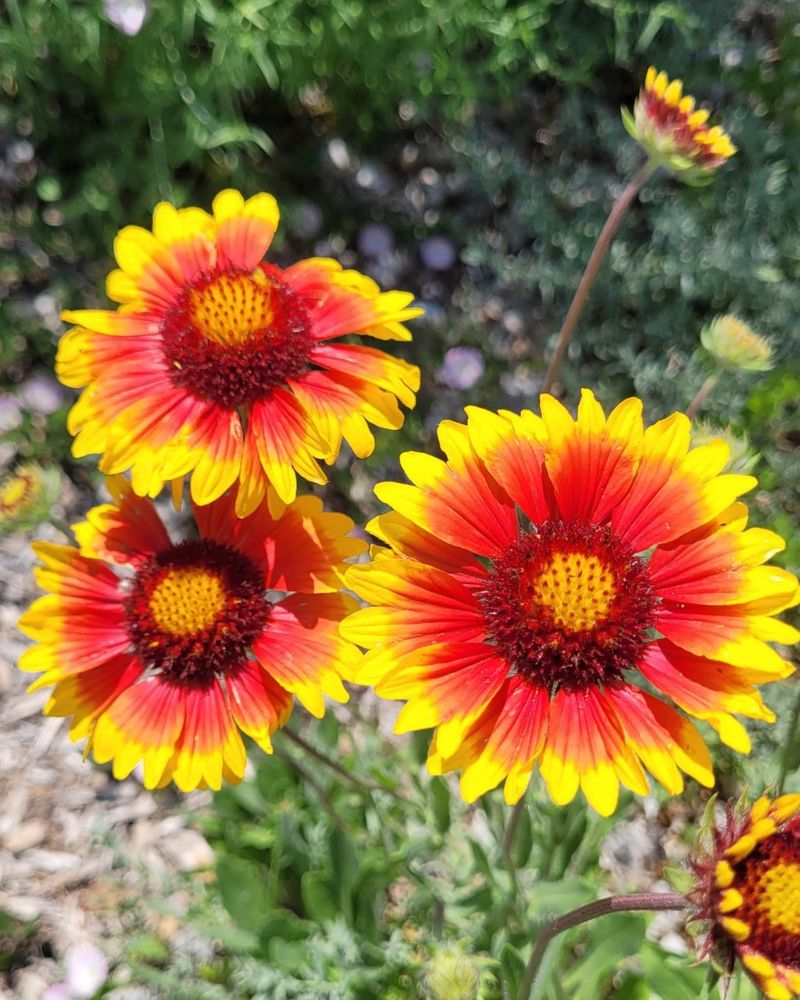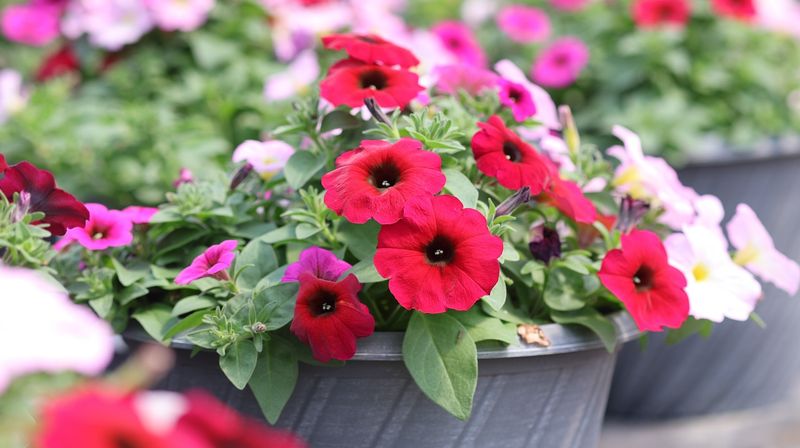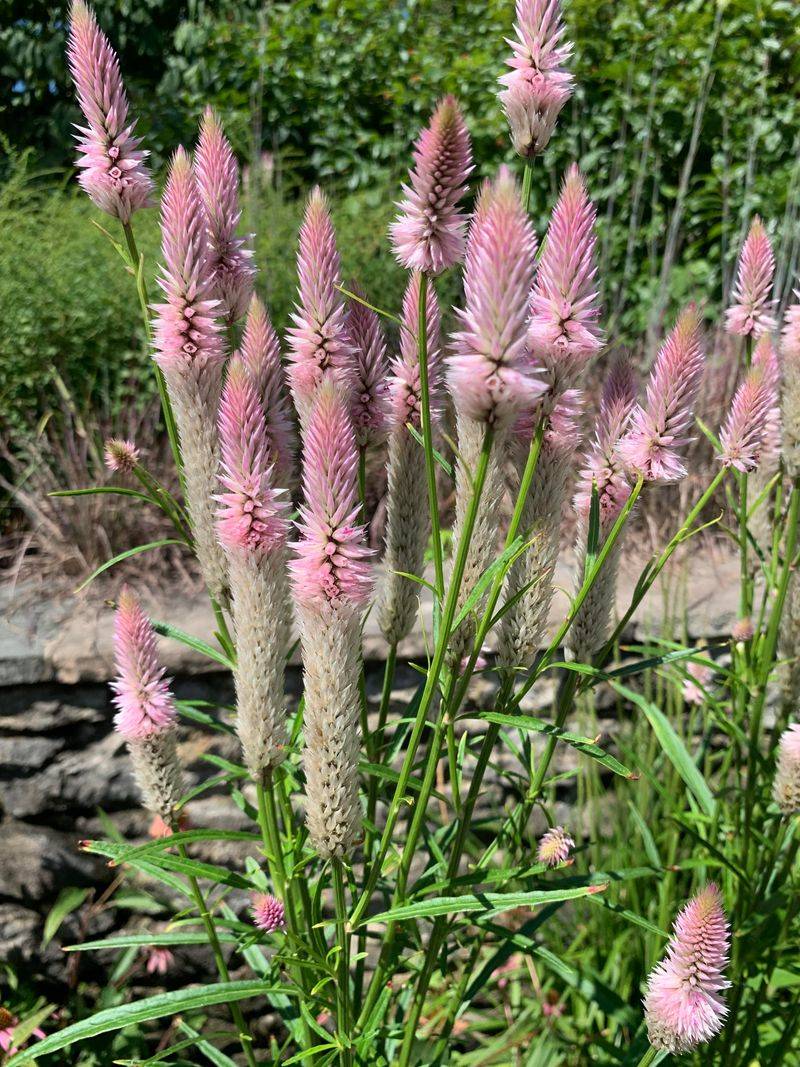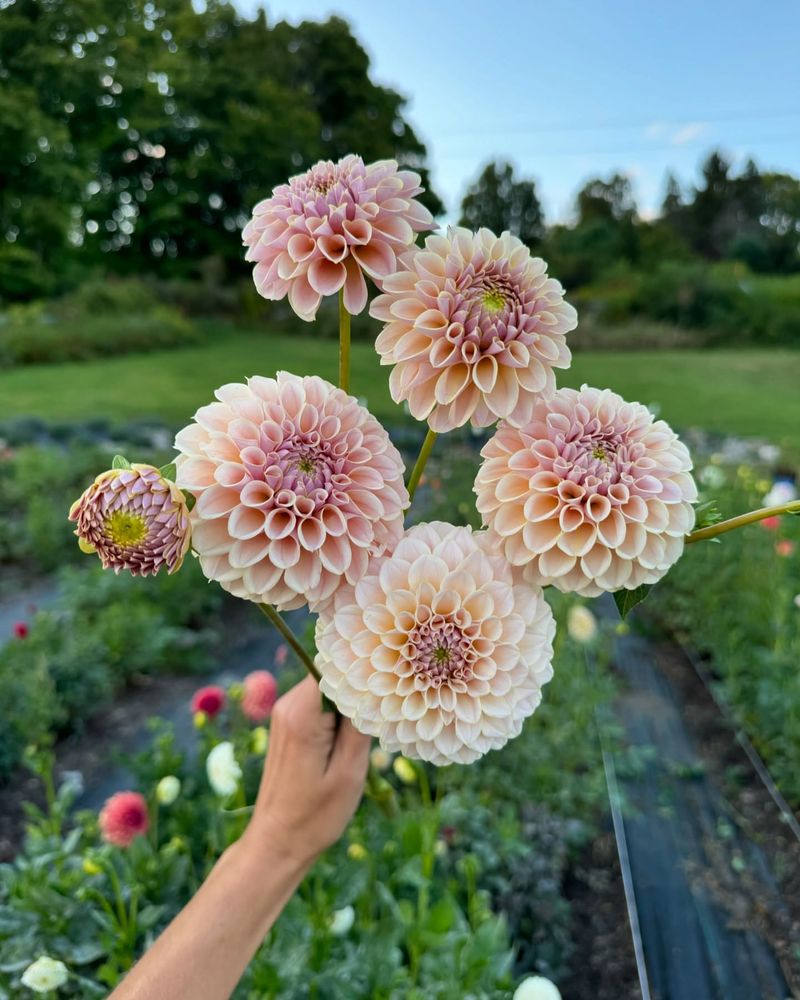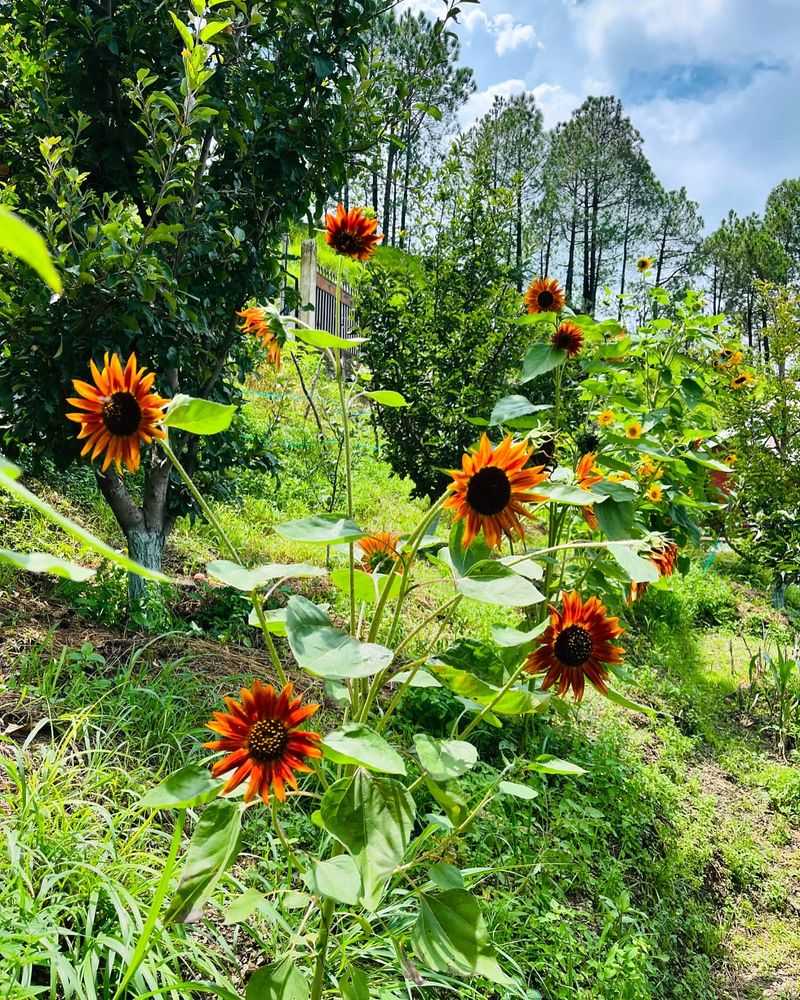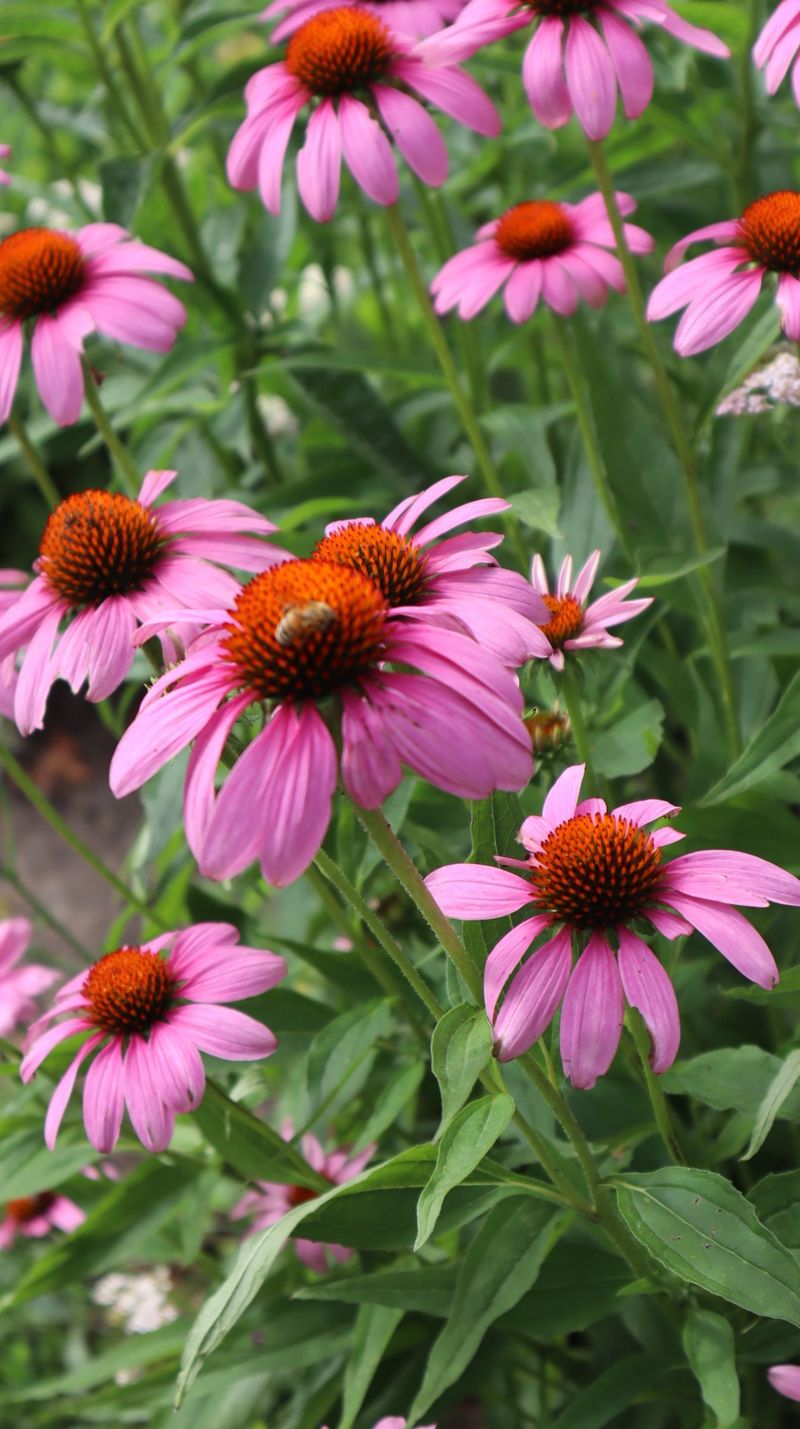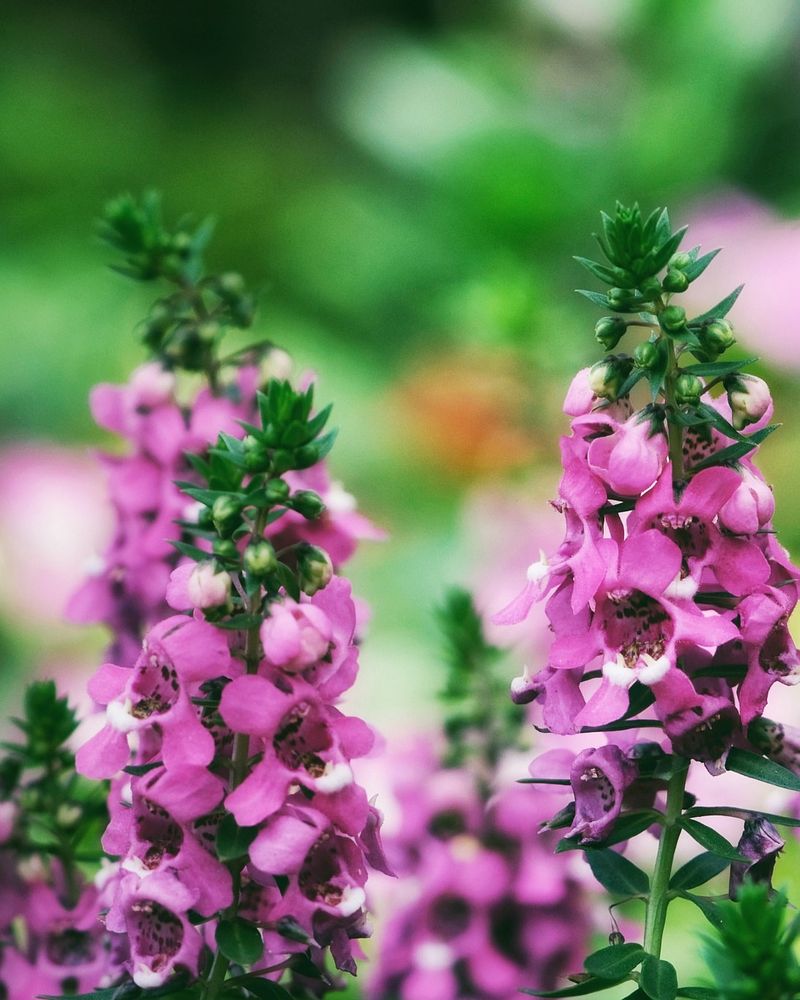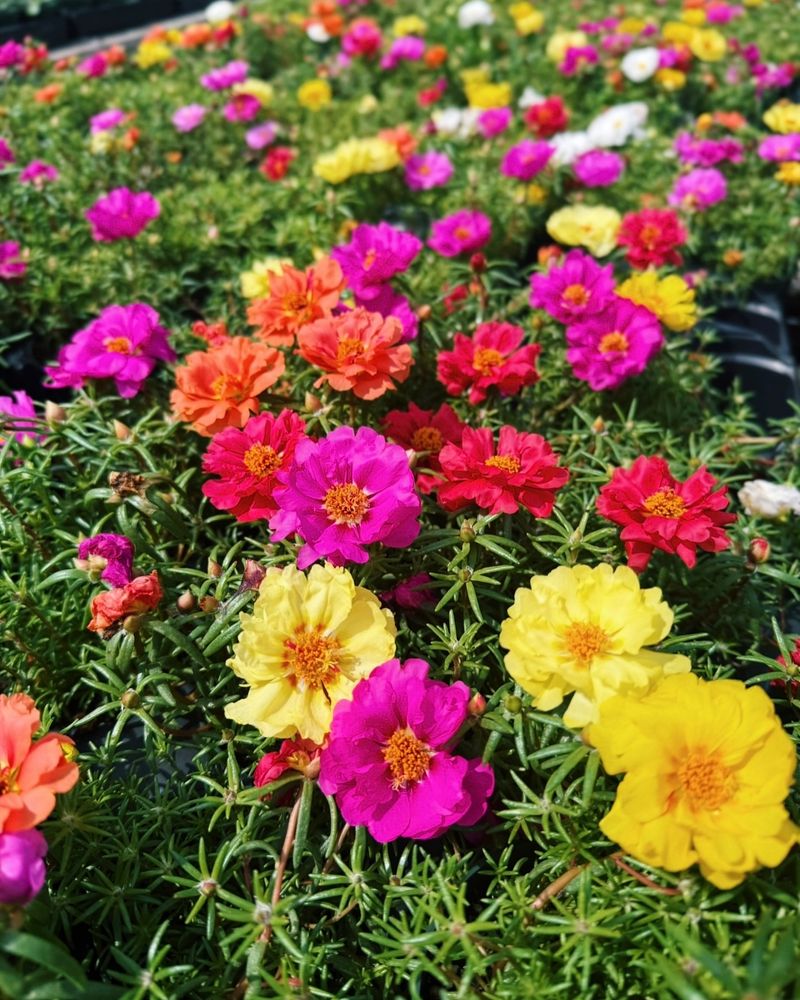Want your garden to stay lively and colorful all summer long? The trick is planting flowers that don’t fizzle out once the heat kicks in. With a little planning now, you’ll enjoy a rolling display of blooms from June right into autumn.
Think heat-loving favorites like zinnias, marigolds, and blanket flowers—these thrive when the sun’s at full strength. They don’t just survive summer, they shine through it, keeping your garden bright and welcoming.
With 18 reliable performers on your planting list, you can create a landscape that evolves with the season. It’s the easiest way to keep your outdoor space bursting with color, all the way to October.
1. Zinnias
Growing these colorful beauties is practically foolproof, even for beginners. They sprout quickly and don’t mind the heat one bit. My backyard always has a patch dedicated to these reliable bloomers.
Last year, I planted a mix of orange and pink varieties that kept producing flowers until the first frost in October.
Just deadhead spent blooms regularly and they’ll reward you with even more flowers. They also make excellent cut flowers that last nearly a week in vases.
2. Marigolds
Sunny and resilient, these golden flowers seem to thrive on neglect. Plant them in borders or containers where you need reliable color all season.
Last summer, rabbits ate almost everything in my garden except the marigolds – they naturally repel many garden pests! The French varieties stay compact while African marigolds can grow quite tall.
Just give them full sun and occasional water. I’ve found they bloom better when you don’t fertilize too much, making them perfect low-maintenance options.
3. Black-eyed Susans
Cheerful yellow petals surrounding dark centers make these native flowers stand out in any garden. They start blooming in midsummer and keep going well into fall.
My neighbor has a patch that’s been coming back for years without any special care. They attract tons of butterflies and beneficial insects to the garden.
Plant them where they’ll get at least 6 hours of sun daily. Once established, they’re quite drought-tolerant and rarely need watering except during the driest spells.
4. Cosmos
Delicate and airy, these flowers dance in the slightest breeze. The daisy-like blooms come in white, pink, and deep rose, creating a meadow-like feel wherever they grow.
Started from seed in May, my cosmos were blooming by July and didn’t stop until October. They’re perfect for filling gaps in garden beds or creating informal cottage garden looks.
Give them average soil and don’t overwater – they actually bloom better in slightly poor conditions. Cut stems regularly for bouquets to encourage more flowering.
5. Lantana
Heat and drought don’t bother these tough little flowers one bit. Multi-colored clusters of tiny blooms change shades as they age, giving each plant several colors at once.
During last year’s August heatwave, my lantanas kept flowering while other plants wilted. Butterflies absolutely love them – I’ve counted five different species visiting in a single afternoon.
Try planting them in containers near patios where you can enjoy their slight citrus scent. They rarely need deadheading and look great spilling over pot edges.
6. Salvia
Spiky flower stalks in shades of purple, blue, or red make these plants architectural standouts. Hummingbirds can’t resist the tubular blooms that appear all summer long.
After trying several varieties, ‘Black and Blue’ has become my favorite for its striking dark stems and vivid flowers. Even in partial shade, it performs reliably from June through September.
Most salvias are drought-tolerant once established. Cut back the spent flower stalks to encourage a second flush of blooms in late summer.
7. Coreopsis
Masses of golden, daisy-like flowers cover these plants from early summer until frost. Newer varieties come in bi-colors and warm reds that expand beyond the traditional yellow.
Planted along my driveway, these flowers need almost no attention yet bloom continuously. The threadleaf varieties have particularly fine foliage that looks good even when not in bloom.
Giving them a light trim in midsummer prevents them from getting leggy. Drought-tolerant and deer-resistant, they’re perfect for busy gardeners who still want color.
8. Verbena
Flat clusters of tiny flowers create a carpet of color in beds or spill beautifully from hanging baskets. The ‘Homestead Purple’ variety has been reliably returning in my garden for three years now.
Heat doesn’t slow these plants down one bit. Even in August when everything else looks tired, verbena keeps pumping out fresh flowers that attract countless butterflies.
Plant them in well-draining soil and full sun for best results. Annual varieties tend to bloom more consistently than perennial types in most climates.
9. Gaillardia (Blanket Flower)
Fiery red and yellow blooms resemble little sunbursts across the garden from June until frost. Few flowers can match their heat tolerance or continuous blooming habit.
My sandy soil isn’t great for most plants, but gaillardia thrives in it. They self-seed modestly, creating new plants that bloom their first year without becoming invasive.
Leaving the seed heads in place attracts goldfinches in late summer. These native-friendly flowers need almost no care once established – perfect for naturalistic gardens.
10. Petunias
Reliable and versatile, modern petunias keep blooming through heat that would stop other flowers. Wave varieties spread up to 4 feet, covering ground or cascading from containers.
Last summer, I tried the ‘Night Sky’ variety with its purple blooms speckled with white dots – they looked like little galaxies all over my porch planters. They performed brilliantly through September.
Feed them regularly and trim leggy stems by about half in midsummer. This quick haircut rejuvenates the plants for a strong late-season show.
11. Celosia
Unusual flame-shaped or brain-like flower heads in bright reds, oranges, and yellows make these stand out in any garden. They thrive in summer heat when many other annuals struggle.
Growing these from seed last year was surprisingly easy. The plume varieties reached nearly 3 feet tall and made exceptional cut flowers that dried beautifully for fall arrangements.
Plant them in rich, well-draining soil for best results. They rarely need staking and continue blooming until frost without much deadheading.
12. Dahlias
Starting these tubers in early summer leads to spectacular blooms by August that continue until frost. Sizes range from dinner-plate varieties to compact border plants with countless color options.
My first attempt with dahlias yielded more cut flowers than I could use. The ‘Café au Lait’ variety produced soft blush blooms larger than my hand that lasted nearly a week in vases.
Stake tall varieties early to prevent storm damage. Regular cutting actually increases flower production, making these perfect for gardeners who enjoy bringing blooms indoors.
13. Sunflowers
Beyond the familiar tall yellow varieties, branching sunflowers produce multiple blooms per plant in colors from lemon to burgundy. Many newer varieties reach just 3-4 feet tall, fitting nicely in borders.
Growing a mix of ‘ProCut’ varieties gave me flowers from July through September last year. The pollenless types are perfect for cutting without making a mess indoors.
Sow seeds directly in the garden in June for fall blooms. Unlike spring-planted sunflowers, these late-sown plants avoid the worst pest pressure and bloom into October.
14. Pentas
Star-shaped flowers in clusters attract butterflies and hummingbirds all summer long. Red, pink, white, and lavender varieties offer plenty of color options for sunny spots.
My container-grown pentas survived 95-degree days without wilting last August. They’re particularly stunning in mass plantings where their continuous blooms create reliable color blocks.
Keep them consistently moist but not soggy. Unlike many summer bloomers, they perform well in morning sun with afternoon shade in hotter climates.
15. Echinacea (Coneflower)
Native prairie plants with daisy-like flowers surrounding prominent central cones bloom for months. Beyond the classic purple, newer varieties offer yellows, oranges, whites, and even green blooms.
Started from small nursery plants in June, my echinaceas were blooming by August and continued well into October. Birds love the seedheads in fall – goldfinches especially.
Plant them where they’ll get full sun and good drainage. They’re remarkably drought-tolerant once established and return reliably for years with minimal care.
16. Calibrachoa (Million Bells)
Tiny petunia-like flowers blanket these plants from planting time until frost. Their trailing habit makes them perfect for hanging baskets and container edges.
Even during last summer’s heat waves, my calibrachoa containers needed watering just once daily. The ‘Superbells Tropical Sunrise’ variety with peachy-pink blooms was particularly impressive all season.
Unlike petunias, they rarely need deadheading to keep blooming. Just feed regularly with liquid fertilizer and trim back any overly long stems to keep them looking fresh.
17. Angelonia
Often called summer snapdragons, these upright plants produce spikes of small, orchid-like flowers continuously. They handle heat and humidity beautifully when other garden stars are fading.
Adding these to my garden three years ago changed my summer flower game completely. Even in August when the garden looks tired, angelonia keeps producing fresh flower spikes without deadheading.
Try the ‘Serena’ series for compact plants or ‘Angelface’ for taller varieties. Both perform equally well in beds or containers and rarely need staking.
18. Portulaca (Moss Rose)
Succulent foliage topped with paper-like flowers in bright jewel tones makes this plant perfect for hot, dry spots. The flowers close at night but open wide on sunny days.
My stone pathway edges host these tough little plants every summer. They self-seed modestly, returning year after year in the harshest conditions without becoming weedy.
Plant them in poor soil with excellent drainage for best flowering. They actually bloom more profusely when slightly stressed, making them perfect for neglected garden corners.


